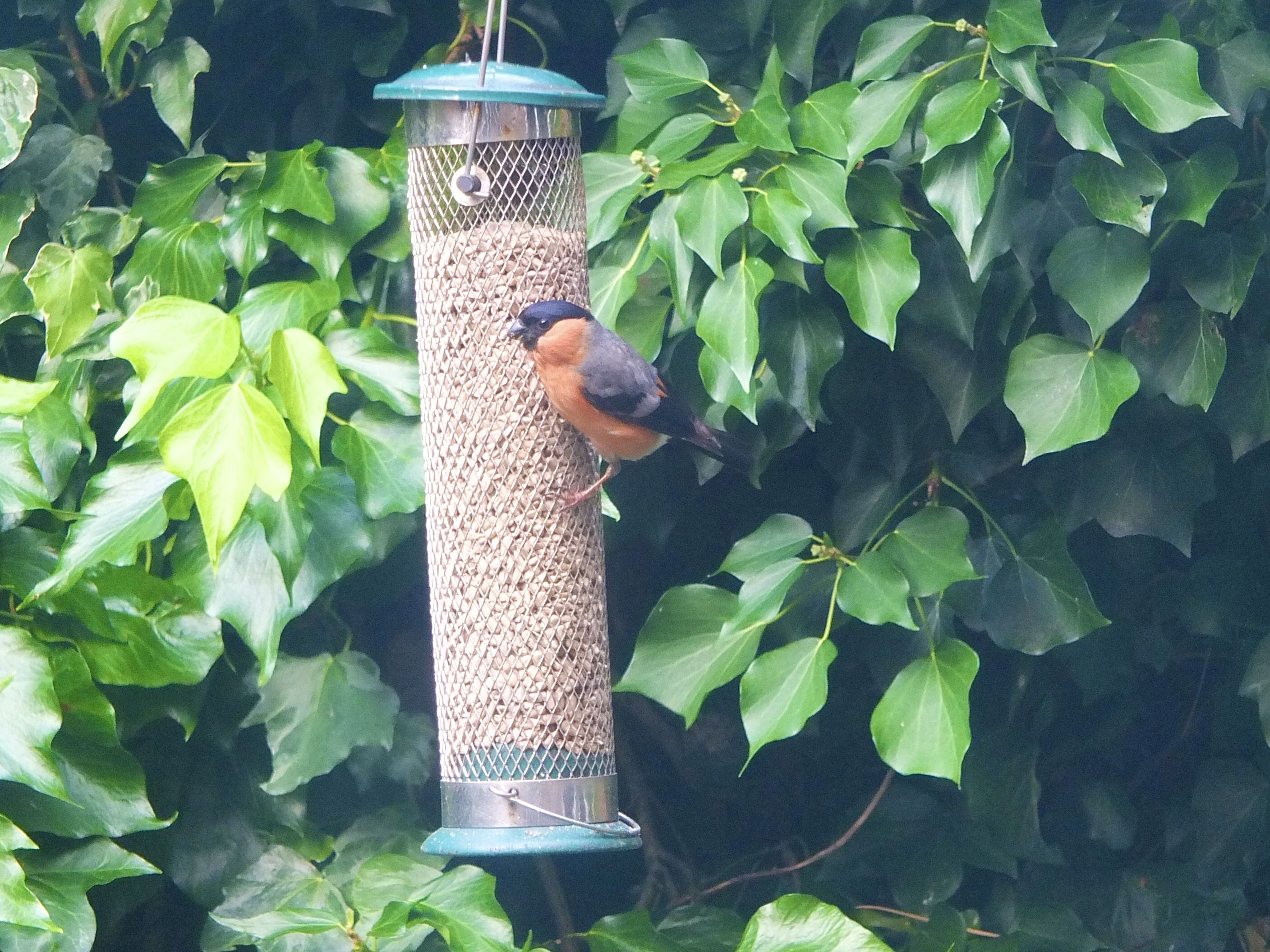YOU know it’s going to be a good day when your favourite bird decides to drop in for lunch.
The stunning male bullfinch suddenly appeared at Dúlra’s feeder this week. It’s been about a year since Dúlra even heard its telltale low whistle in the area – despite its bright cherry-red chest it’s a bird that is more often heard than seen – so it was a real treat when it decided to dine on the sunflower hearts.
And why is it Dúlra’s favourite bird? Well, two reasons really. The first goes all the way back to his schooldays, when he committed a terrible sin against this beautiful bird.
He trapped a pair on Black Mountain and built a wire home for them in his shed.
It’s something unthinkable today, but at a time when a lot of kids collected eggs, going one step further and actually catching the birds for your own entertainment didn’t seem wrong.
And anyway, Dúlra was going to breed them just like in the wild.
For one summer he watched them build a nest in that cage, then lay four gloriously blue eggs. Each morning Dúlra would check on them before going to school, then be first out the gates to rush back in the afternoon. The chicks hatched, but the cruel experiment was to end in tragedy. The parents couldn’t possibly find the food required to feed the chicks. They needed acres of hedgerows from which to pick grubs and insects. Chick food that Dúlra was using for his canaries just wasn’t the same. The youngsters died after a week. Dúlra freed the parents to return to the mountain, but he still carries that burden of having wronged this bird and it’s a blemish that will never be removed.
But from that time, the bullfinch has been the king of the birds for Dúlra. Not out of guilt, although that would be understandable, but because during that time in captivity, he heard the song.
It’s as musical as Beethoven’s finest composition, but as low as a whisper. Today you can hear it on an app, but in those days it was a mystical, even mythical thing. You have to be within a couple of feet of the male to hear it, and these hedgerow birds will see or hear you coming from a mile off. Dúlra used to stand outside the shed door as the male sang to his mate, and it was mesmerising.
That’s the first reason for his lifelong devotion to this bird. The second is its beauty – not the flashy male’s, but the demure female’s. While the male can’t avoid being distinctive, she’ll stay in the undergrowth, blending in with the vegetation. Bullfinches mate for life, so she’ll never be far away from her mate. But it takes a trained set of birdwatcher’s eyes to find her.
This week she was hopping through the hedge, camera-shy, as he feasted on the sunflower hearts.
As the author Manchán Magan pointed out when he was talking in St Gall’s during Féile an Phobail last week, Irish people through the Irish language had a wonderful child-like way of describing nature. So the ladybird is bóín Dé – God’s wee cow – and a spider, damhán alla, is a ‘fierce little stag’. The bullfinch is corcrán coille – the pot-belly of the woods – because it’s much plumper than the other finches.
This week, Dúlra was never so happy to see a bird when the pair of bullfinches visited his garden.
The sunflower hearts were like a peace offering for the wrongs of his childhood. And he likes to think that the bullfinches of the Belfast hills were glad to accept it after all these years.
• If you’ve seen or photographed anything interesting, or have any nature questions, you can text Dúlra on 07801 414804.








